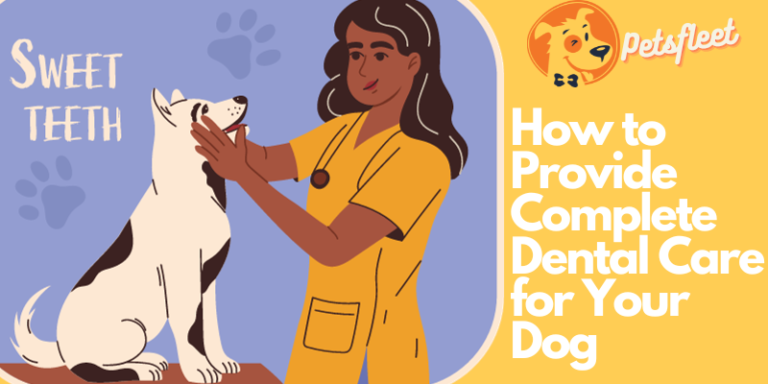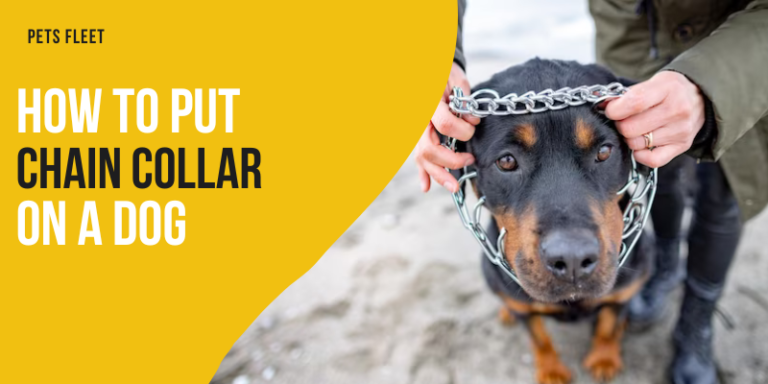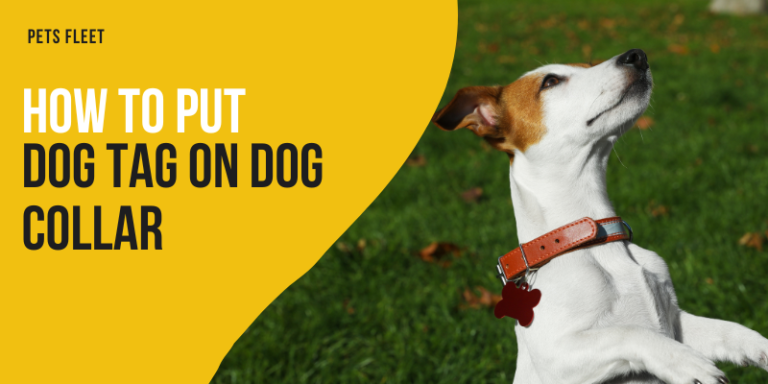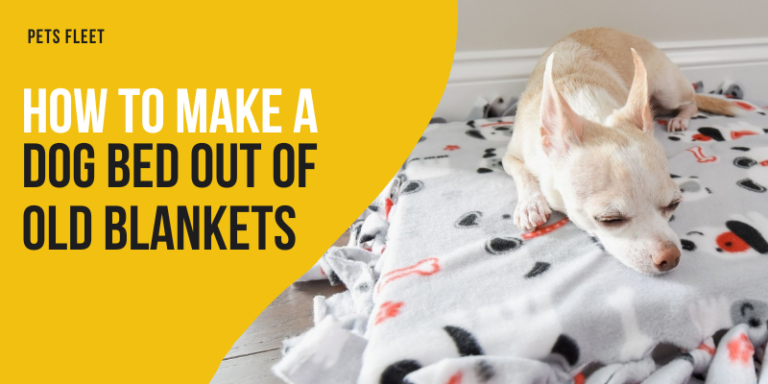How To Put On An Elizabethan Collar For A Dog – Instructions

If you’ve ever been through the “cone of shame” saga, we feel your pain. But fret not, fellow dog lovers, because I’ve got your back! Yes, I am talking about that iconic and sometimes cumbersome Elizabethan collar.
To properly put on an Elizabethan collar for your dog, gently slide the collar over their head, ensuring it fits comfortably around their neck. Fasten the collar securely using the adjustable straps to prevent your dog from removing it.
Say goodbye to the frustration of improper fitting or discomfort, as we provide a simple and effective solution. With our guide about how to put on an Elizabethan collar for a dog you’ll master the art of putting on an Elizabethan collar for your dog, ensuring their well-being and a smooth recovery.
Supplies Needed For Putting On An Elizabethan Collar
When it comes to putting on an Elizabethan collar for your dog, having the right supplies is essential. Here are a few items you’ll need to make sure the process goes smoothly.
- First, make sure you have the right size Elizabethan collar for your dog—snug enough to protect their wounds but not too tight. Think of it as a comfy “cone of shame.”
- Get some tasty treats ready to distract and reward your pup. Positive reinforcement makes collar time more enjoyable and less stressful.
- Keep a leash nearby to help keep your dog calm and still while you secure the collar. Safety first!
- If you need an extra hand, ask a friend or family member to lend a paw. Teamwork makes the process smoother and more efficient.
By gathering these supplies beforehand, you’ll be well-prepared to put on an Elizabethan collar for your beloved pup without any unnecessary hiccups!
How To Put On An Elizabethan Collar For A Dog – Step By Step Instructions
Step-by-step guide to putting on an elizabethan collar are:
1- Choose The Right Size
Select an Elizabethan collar that fits your dog comfortably. It should be snug enough to prevent them from reaching their wounds or stitches, but not too tight that it causes discomfort. Think of it as a protective fashion accessory.
2- Gather Treats And Rewards
Have some tasty treats or rewards on hand to distract and comfort your dog during the process. Positive reinforcement will make putting on the collar a positive experience for them.
3- Prepare The Collar
Adjust the collar to the appropriate size by loosening or tightening it as needed. Ensure that it is in a cone shape, ready to be worn by your furry friend.
4- Get Assistance If Needed
If your dog tends to be fidgety or uncooperative, consider having someone assist you. This extra set of hands can help keep your dog still and make the process easier for everyone involved.
5- Position The Collar
Hold the collar with the wider end facing outward and the narrower end pointing toward your dog’s neck. Carefully slide it over their head, gently guiding their ears through the openings.
6- Secure The Collar
Once the collar is in place, fasten any straps or buckles to secure it around your dog’s neck. Ensure that it is snug enough to stay in position but not too tight to cause discomfort.
7- Offer Treats And Praise
Immediately after putting on the collar, offer your dog treats and shower them with praise to reinforce positive associations with wearing the collar.
8- Monitor And Adjust
Keep an eye on your dog to ensure they are adjusting well to the collar. Make any necessary adjustments to ensure their comfort and safety.
By following these steps, you can effectively and comfortably put on an Elizabethan collar for your dog, promoting their healing and well-being during their recovery.
Tips And Tricks For Making The Process Easier
Putting on an Elizabethan collar can be a bit challenging, but fear not! With a few tips and tricks up your sleeve, you’ll have no problem making the process easier for both you and your furry friend.
- It’s important to approach your dog with calmness and confidence. Dogs are highly attuned to our emotions, so if you’re feeling anxious or stressed, they may pick up on that energy. Take deep breaths, speak in soothing tones, and use gentle movements when attaching the collar.
- One helpful trick is to distract your pup during the process. You can try giving them a favorite toy or treat to keep them occupied while you secure the collar in place. Engaging their attention elsewhere will make it easier for you to work quickly and efficiently.
- If your dog seems resistant or uncomfortable with wearing the collar initially, try introducing it gradually. Start by having them wear it for short periods of time under supervision before gradually increasing its duration.
- Ensuring that the size of the Elizabethan collar is correct is crucial for their comfort. Measure carefully around your dog’s neck before purchasing one to ensure a proper fit. A snug but not tight fit will prevent them from slipping out of it while still allowing them freedom of movement.
Remember that patience is key throughout this entire process! Some dogs may take longer than others to adjust to wearing an Elizabethan collar comfortably.
What Not To Do When Putting On An Elizabethan Collar
Putting on an Elizabethan collar for your dog can be a bit tricky, but there are some common mistakes you should avoid. By being aware of what not to do, you can ensure a smoother and less stressful process for both you and your furry friend.
- Take your time and approach the process calmly. Dogs can sense our emotions, so staying relaxed will help them feel more at ease.
- Be prepared with the right size collar and make sure it is properly assembled before starting.
- Fit the collar comfortably around your dog’s neck without tightening it too much. It should prevent them from reaching certain areas without causing discomfort.
- Ensure a snug fit without any gaps for them to reach through.
- Use positive reinforcement by rewarding your dog with treats or praise throughout the process to create positive associations.
By following these tips, you can put on an Elizabethan collar for your dog in a calm and effective manner, ensuring their well-being during their recovery.
How Long Does It Take to Get Used To An Elizabethan Collar?
One of the most common questions dog owners have when it comes to using an Elizabethan collar is how long it takes for their furry friend to get used to wearing one. While every dog is different, there are a few factors that can influence the adjustment period.
- Dogs vary in temperament and adaptability. Some may immediately accept the collar without any issues, while others may take longer to adjust. It’s important to remember that patience is key during this process.
- The type of collar being used can also impact how quickly a dog gets accustomed to it. There are various styles available, including inflatable collars and soft fabric alternatives.
- There must be consistency in wearing the collar. Dogs need time and repetition to become familiar with new things, so keeping the Elizabethan collar on consistently will help them acclimate faster.
- Providing positive reinforcement such as treats or praise can also help your dog associate wearing the collar with something pleasant. This positive association can speed up the adaptation process.
- While there isn’t an exact timeframe for getting used to an Elizabethan collar, most dogs typically adjust within a few days or weeks of consistent wear.
Remember that each dog’s experience will differ, so be patient and understanding throughout this transition period.
Alternatives To The Elizabethan Collar
There are some alternative options available that can provide similar protection without causing as much discomfort.
1- Inflatable Collars
These collars are designed to provide a barrier around the dog’s neck without obstructing their vision. They are more comfortable and less restrictive compared to Elizabethan collars. However, they may not be suitable for dogs who are persistent in reaching their wounds.
2- Recovery Suits
These full-body suits cover the dog’s torso and hind legs, providing a protective barrier while allowing more freedom of movement. They can be a good alternative for dogs who need to recover from surgical procedures or skin conditions.
3- Soft Collars
Soft fabric or padded collars can be used as an alternative to the rigid Elizabethan collar. They are more flexible and less obstructive, making them more comfortable for dogs. However, they may not be as effective in preventing access to certain areas.
4- Neck Braces
Neck braces can be used to restrict movement and prevent dogs from reaching their wounds. They provide support and limit mobility in the neck area. However, they may not be suitable for all types of injuries or conditions.
5- Cone Alternatives
There are various cone alternatives available in the market, such as donut-shaped collars or neck pillows. These alternatives provide a comfortable and less restrictive option for dogs while still preventing them from reaching their wounds.
When considering alternatives to the Elizabethan collar, it’s important to consult with your veterinarian to determine the most appropriate option based on your dog’s specific needs and condition.
Conclusion
Putting on an Elizabethan collar for a dog may seem like a daunting task, but with the right supplies and a guide, it can be done smoothly. Remember to approach your furry friend with patience and gentleness to make the process easier for both of you.
Remember, putting on an Elizabethan collar is just one part of ensuring your pet’s well-being during their recovery period. It is important to follow any additional instructions provided by your veterinarian regarding medications, activity restrictions, and wound care.
We hope this article has helped demystify how to put on an Elizabethan collar for a dog. With proper guidance and a little bit of patience from both you and your furry friend, they will soon be on their way back to health!






